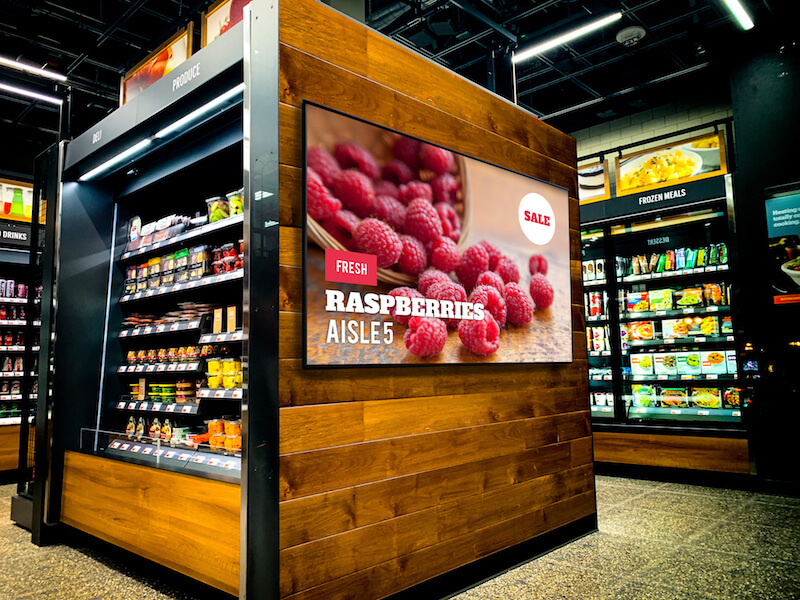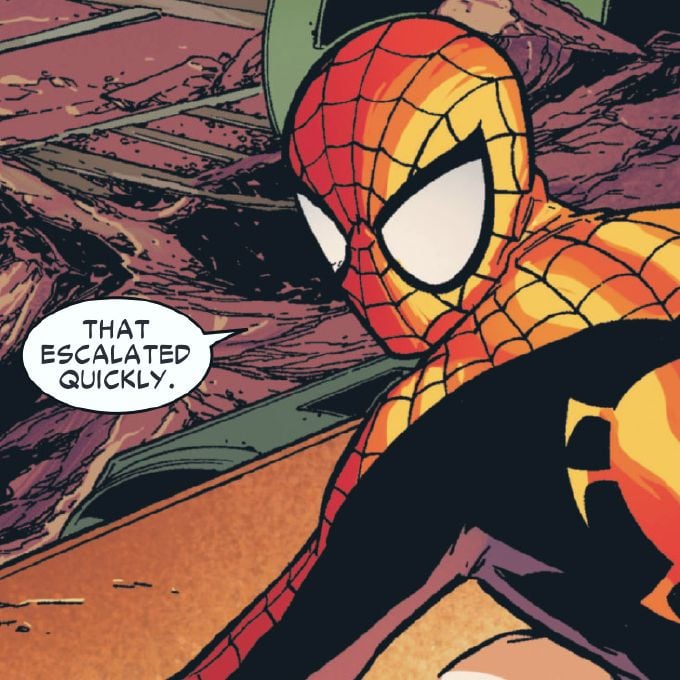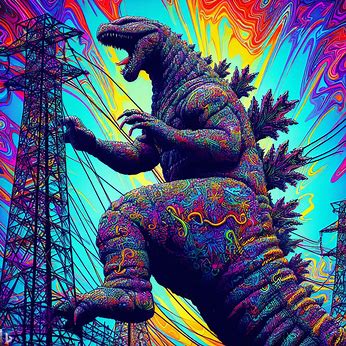- cross-posted to:
- [email protected]
- cross-posted to:
- [email protected]
Shit must look dystopian to anyone who doesn’t understand what it is.
I bet there was a granny, reading it line by line and crumple about where the fucking apples at.
What u mean granny just grep ‘apple’ Duh
Lmao
ALL SHALL BOW BEFORE THE DARK OBELISK OF TECHNOLOGY.
Some crusty broken distro install with a broken boot that may or may not be due to a bad disk or fs corruption is pretty much as dystopian as it gets.
And this comment is about as “First World Problems” as it gets.
My supermarket uses Arch btw.
I’m sure they announce it on their loudspeakers when you’re in the store too.
“Beware peasants! This store uses arch btw.”
Oh man I would do this all the time. When I worked a grocery store it had suse and later they switched to windows. Before if anything didn’t work it was user error like rebooting with personal items left on the keyboard. After we had self checkouts that would bluescreen and other than myself only two people knew how to reboot them. If it had arch I would make sure everyone knew.
Why does this produce need a massive digital signage pylon?
They needed to construct additional pylons.
Thanks Judicator Aldaris
You need more minerals
No idea where it’s from or what it usually looks like since I just nabbed this off of Facebook, but my guess is to display ads, or perhaps some slo-mo videos of fresh fruit being tossed in an appetizing manner in an attempt to trigger your Pavlovian reflex to buy some of those oranges.
Couldn’t find any pictures of that particular setup operating under normal conditions, but here are some similar ones to give you an idea:


The question is, why does it run on Linux and not Apple
Perhaps it runs on a Raspberry Pi?
Or orange pi. Banana pi.
The best thing I learned when writing this comment (because I know there are other fruity labeled pi computers) is that you can look up “other fruit pi” and actually find results. Semi-relevant ones. (I use ecosia, not google/bing/askjeves, so ymmv)
I was in a hotel where there was an AV input on a TV which just showed the screen of a Raspberry Pi. If I remember correctly it was running XFCE.
Not sure why that was because the TV channels worked correctly.
Because it would be expensive, just look at the price of the Lime /s
Why would it run on a fruit?
Yes! Potatoes are the way, as our ancestors taught us!
So, an HP laptop?
Mine is an ancient Thinkpad, the true weapon of our Lord!
And not Windows*
Macs are not worth it for stuff like this.
Because flashy screens work on dumb lizard brains
Well ya. That is why were are here in this thread right now. But also having a sign you can change easily is probably also useful.
Big Fruit is going to control our minds and enslave us all. If only they could get the interns to configure their shitty Linus distro.
Do you really want an explanation for why a market might want large signage that they can change without much extra labor? Seems self evident to me.
You could’ve just said:
So they can change the signage without much extra labor.
Wouldn’t be a Linux community without extra spice though
Do you understand the meaning of the word “need?”
Greed?
Advertising, easier to see prices
To attract bugs there instead of the food.
But that’s where the food is.
I know, but they will be on the screen instead of the food.
The lamps are not enough.
It got too close to the Apples and was corrupted.
Well, it doesn’t look like a core dump
Can a linux/systemd nerd explain what the error is? I know it’s a shutdown sequence, but I’m curious on the fault
It is actually a boot failure. Normally the kernel reads some config from the initrd (the bootloader loads initrd and passes it to the kernel - thanks dan) and then does a bunch of setup stuff, and then it mounts the actual root filesystem, and then switches to using that. In this case, the root filesystem has failed to mount.
Hardware failure is most likely the cause, but misconfiguration can also make this happen. Probably hardware though.
If its misconfiguration, an admin can reattempt to mount the root drive on /new_root, and then ctrl-d to get the init system to try again
ELI5: couldnt open C:/ drive
Edit: clarified what loads the initrd - as per dans comment.
Normally the kernel loads an initrd filesystem,
The bootloader (GRUB) loads the initrd, not the kernel. The kernel accesses stuff from the initrd, but it’s already loaded by that point.
You are correct. Ill add an edit. Thanks!
Thanks for that!
Switching to Linux and actually being able to see real time logs made me actually curious how it works, so that’s one gear out of the machine demistified
These kinds of public errors are almost always a hard drive failure.
Using an actual hard drive for an embedded system like this would be a failure in and of itself.
Unless it literally has to store several hours’ worth of HD video content, no reason the entire system couldn’t fit on an SD card.
It’s been my experience that SD cards are almost always what causes a failure on a SBC. Given the cost of the screens, i’d probably choose something that could boot off nvme storage. Or at least tape a new, configured SD card to the case of the SBC for when this inevitably happens.
An SD card is MUCH less reliable than a good hdd unless it’s read only.
As someone who works on embedded devices: HDDs are used for media storage and can be easily replaced. Any NAND as a limited life span and good embedded software will try very hard to minimise writes. Though in my particular area, there’s additional security constraints on the OS, which preclude any removable flash storage from being used.
They probably expect the signage to change a lot and don’t want a hardware failure when they do it too much, or didn’t use an external drive in this case and the SD card failed because they wrote to it too much (which would happen eventually anyway).
Even better: Three SD cards with a ZFS mirror and failure notifications
Bah humbug, just hook it up to the cloud, WCGW?
You don’t need an internet connection for failure notifications
Using an actual hard drive for an embedded system like this would be a failure in and of itself.
You may be surprised to learn that these stores use machines that are occasionally more than a year old and also use inexpensive tech like enterprise spinny disk.
A spinny disk will work in this space, and you know they’ll be deciding based on cost.
Systemd has a feature to shorten lines too long for the display, which is a pretty stupid idea, as you can see here.
The service failing here would be initrd-switch-root.service.
So the weird block character in the “see… for details” line is replacing “nitrd-switch-roo” just to shorten the line? That’s what I was trying to figure out.
Yeah, that’d be the Unicode ellipsis character (…) rendered on a system without a Unicode font on the terminal.
Who doesn’t love some kernel panic during shopping
Or at the disco.
how else r they gonna make popcorn?
That’s not a kernel panic
any idea what this is? Ive been seeing this a lot when I start up my laptop - sometimes it goes away automatically, sometimes it doesnt, but I have no idea what to even search for.
That’s just systemd failing to start Switch Root. Have you tried the systemctl status suggestion in the error, or reading the text file it generates?
search for “linux fix bad bit”, from my experience with raspberry pis i think this happens if you don’t power off the device properly. if this happens more often, it’s usually a sign that the hdd is damaged and will give in soon
Do they use a raspberry pi?
Or an Adafruit, perhaps?
Never heard of an adafruit SBC that runs Linux, but there’s a ton of these SBC so it might be
I honestly have no idea what they run on, I just know that they exist, and therefore there’s a fairly good chance that they at least CAN run Linux.
They probably only use it to display prices or ads so there’s not much power required. Hell you could probably do it on arduino
You can run DOOM on an Arduino, no problem.
I prefer Key Lime Pie tbh
Probably too small for systemd.
I mean, I can hope smaller machines run smaller builds that can avoid systemd, at least.
Rpi does use systemd tho…
Raspberry pies are more powerful than you give them credit here. Nothing wrong with using systemd on them
Is this an actual video wall? Looked like bad CGI art. Kinda absurd.
Great post though.
I haven’t seen this thing in action under normal conditions since I just looted the picture off Faceborg, but I imagine it probably shows a slideshow of ads.
I had a HDD fail on my media server and that screen gives me ptsd. I could clean it up with fsck for a while, but it meant plugging a keyboard and monitor into the box. A huge PIMA, I should have swapped out that drive the first time it happened.
You didn’t immediately swap the failing drive? I feel sorry for the media server. It was trying it’s best
Do you not like sound of the read head scraping against the platter on spin up? Weirdo… It’s a rare treat, so you have to appreciate it while it’s there.
Neat, I saw a price scanner at Walmart with an Android error today
Oh man, I WANT THIS THING! That is what I call a cool feature in home design. Time to think how to do it relatively cheaply in my study…
This is an old image
Very intreasting. But can it run doom?
If a literal toaster can do it, I’m sure this thing probably can as well.
Here is an alternative Piped link(s):
Piped is a privacy-respecting open-source alternative frontend to YouTube.
I’m open-source; check me out at GitHub.
Not without mounting its root partition on the failing harddrive
They ran out of flux capacitor.


























